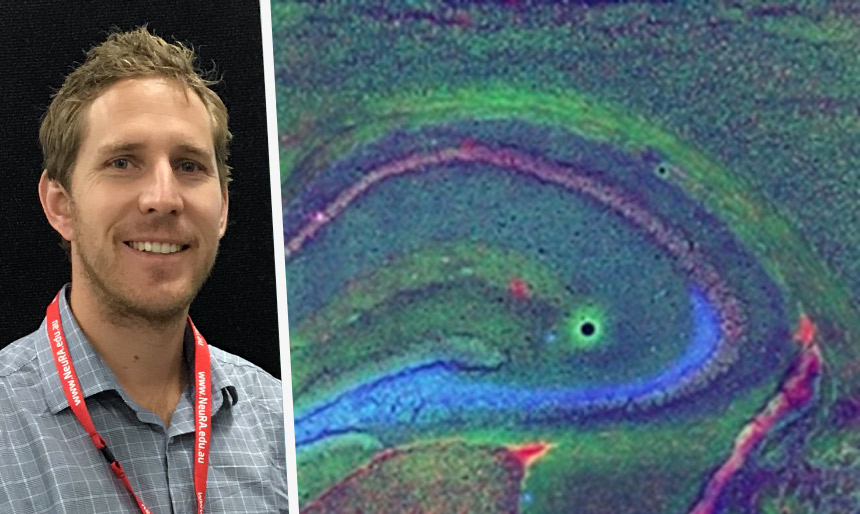
Multi-Modal Imaging to Study Brain Disease: Metals, Memory Loss and More!
A presentation by Dr. Mark J. Hackett (PhD), lecturer in analytical chemistry, Curtin University, Australia
A presentation by Dr. Mark J. Hackett (PhD), lecturer in analytical chemistry, Curtin University, Australia
Wednesday, Sept. 4
Neatby-Timlin Theatre, 241 Arts Building, 9 Campus Dr.
1:45 Introductions
2:00 Keynote presentation by Dr. Hackett
3:00 Networking and refreshments
All are welcome! Click to RSVP.
Info: ingrid.pickering@usask.ca
Abstract:
Neurodegeneration that occurs during brain disease or following brain injury has limited treatment options, and is a critical medical condition. The lack of effective therapies can be attributed to incomplete understanding of the chemical mechanisms that are essential for healthy brain function, and an incomplete understanding of how injury or disease perturbs brain chemistry.
Advanced imaging technologies such as synchrotron X-ray fluorescence microscopy (XFM) and micro X-ray absorption spectroscopy (µXAS) are making an important contribution to our understanding of brain function and malfunction. This is due to their capability to directly image diffusible ions (K+, Ca2+, Cl-) and transition metals (Fe, Cu, Zn) at cellular resolution. Integration of XFM and µXAS alongside vibrational spectroscopy and traditional histochemical methods, in a multi-modal workflow, enables association between cell physiology, altered metal ion homeostasis, protein aggregation, oxidative stress, and disturbed brain metabolism.
Dr. Hackett’s presentation will highlight recent research advances with respect to optimisation and application of the above spectroscopic techniques for direct in situ imaging within ex vivo tissue sections of animal models of neurodegeneration (specifically stroke and dementia). In addition to neuroscience, the multi-modal spectroscopic approach is well suited to a range of other analytical applications, such as forensic fingermark detection and in vivo monitoring of plant physiology, which will also be briefly discussed.
Biography
Dr. Mark J. Hackett completed his undergraduate degree in analytical chemistry at Curtin University, Australia in 2006, and a PhD at the University of Sydney in 2010 with Professor Peter Lay developing spectroscopic imaging protocols to study neurochemical mechanisms of cerebral malaria. His PhD provided the unique opportunity to be involved in commissioning experiments at both XFM and IRM beamlines at the Australian Synchrotron, as well as at several international synchrotron facilities. He then worked with Professors Ingrid Pickering and Graham George at the University of Saskatchewan, where he held SHRF and CIHR Fellowships and accessed multiple synchrotron facilities across North America to drive development of beamline-end stations optimised for biological experiments. He returned to Australia in 2016 to commence a research and teaching lectureship at Curtin University. He currently holds a Dementia Australia Research Foundation Fellowship, with a main research focus on using synchrotron imaging methods to understand the role of metal ions in memory function.
Sponsors
Refreshments sponsored by University of Saskatchewan Office of the Vice President Research, College of Graduate & Postdoctoral Studies, College of Arts and Science, and College of Medicine.


